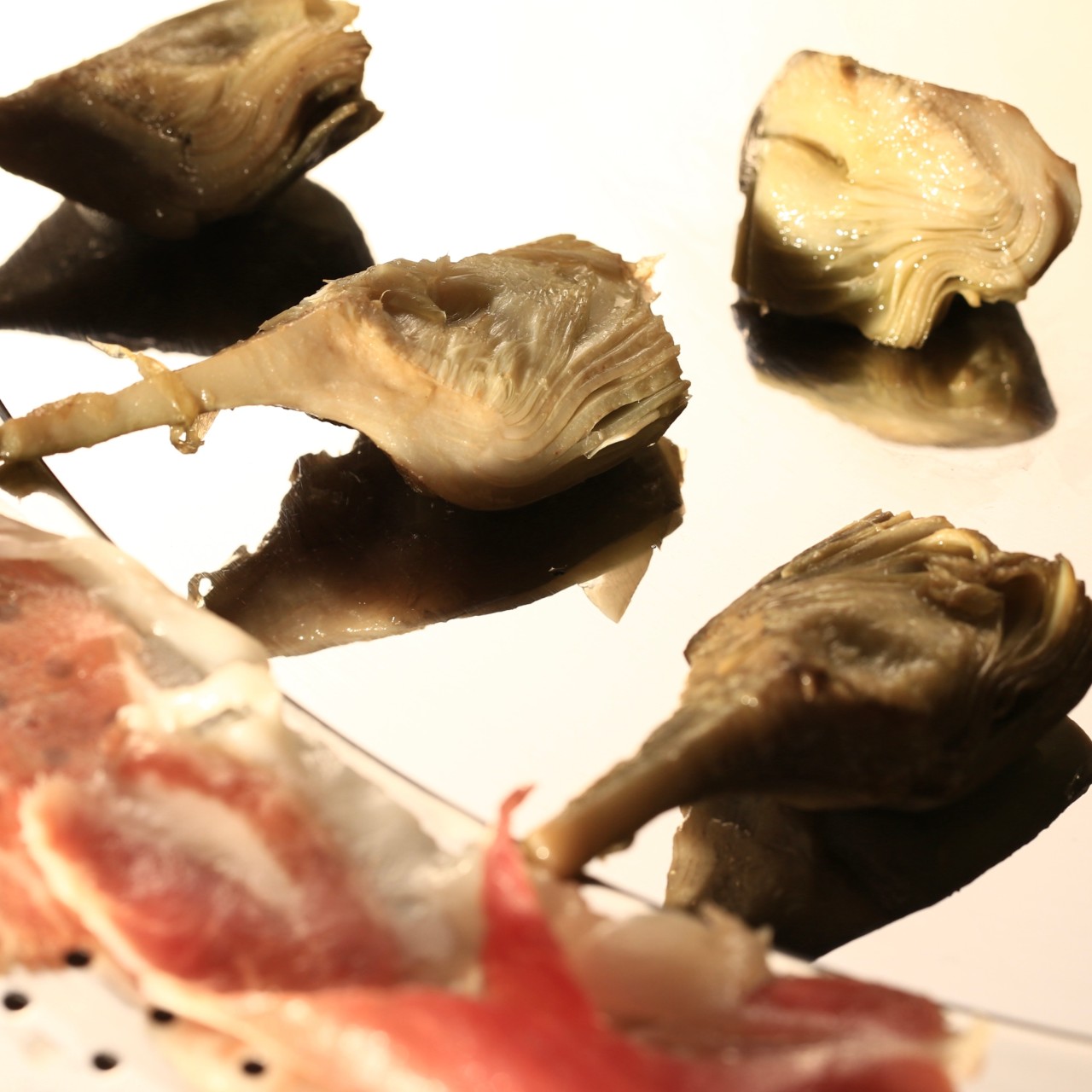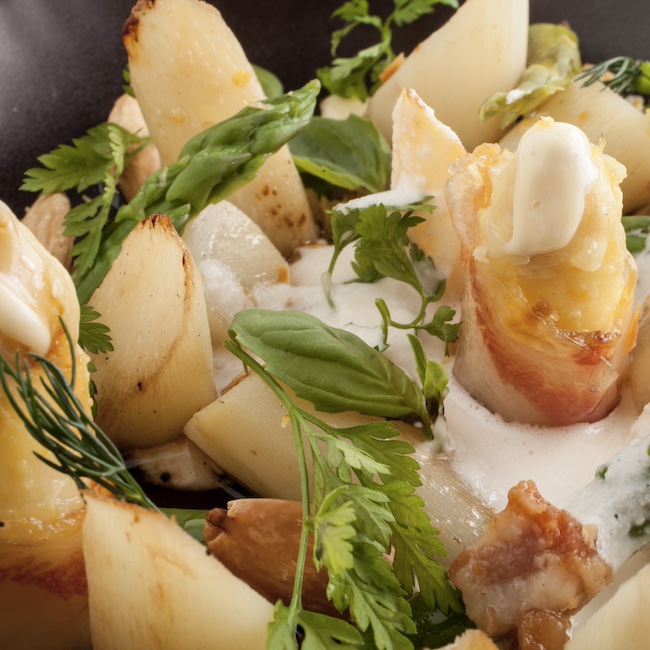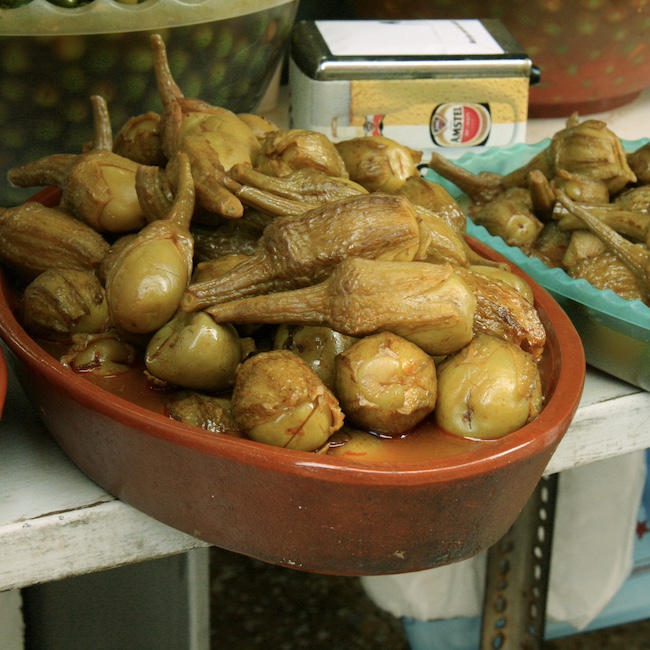by Marti Buckley - @martibuckley
.png.transform/rendition-xs/image_image%20(1).png)

by Marti Buckley - @martibuckley
The sun beats down over most of Spain, resulting in a land that yields sweet, flavorful fruits and vegetables that are the envy of much of Europe. It is the largest exporter on the continent, according to data from the Spanish Ministry of agriculture fisheries and food. This is in part thanks to the quality and sheer abundance of produce, but to find out why Spain is a global leader in vegetable cultivation and preservation, you have to look at the country’s culinary traditions. The villages of Spain, many of them in rural regions, have historically used canning and preserving as a way to enjoy seasonal produce all year long. A rocky socioeconomic and political past meant that families had to be resourceful—waste was not an option.
Canned vegetables have even come to influence contemporary dining culture in Spain. A happy side effect? These plump, brined olives and sweet tender jarred peppers lent themselves perfectly to the preparation of snacks to accompany another agricultural product, wine, influencing the evolution of the tapas tradition.
This cycle of excellence, from the terroir to the tin, is what makes Spain’s vegetable conservas so unique. Some of them are even designated with Denominación de Origen (DO) and Indicación Geográfica Protegida (IGP) status, acronyms that spell out the fact that these vegetables are the pinnacle of quality. Read on to find out more DOs, IGPs, and the best Spanish vegetables.
The Secret Code to Spain’s Vegetable Conservas
When selecting vegetable conserves from Spain, there is a simple code you should know. Once you crack it, you’ll be able to decipher any label and choose the best veggies for your money. The highest quality vegetable conserves are stamped with white stickers that read either DO or IGP.
Need a veggie TLDR? DO has stricter control over both the growing and processing locations, while IGP allows some flexibility in the production process as long as the product is closely tied to a specific region's tradition.

Pimientos del Piquillo de Lodosa DOP
Peppers are one of Spain’s most popular exports, and piquillos are the jewel in the pepper crown. These ruby red peppers are about 7 cm long, and the name piquillo (little beak) comes from their heart shape and tapered tip. Don’t bother looking for fresh piquillo peppers—they are traditionally roasted over open flame in stone ovens, to blister the skin before being hand peeled and canned. Each bite is unbelievably sweet and flavorful, with a subtle smoky note. The peppers grown in Lodosa, in southern Navarre, are particularly renowned and protected by the DOP (a DO that is recognized across Europe). Producers like El Navarrico maintain these traditional methods, producing perfect peppers that you can stuff with cheese or meat for classic pintxos or slice and use in cool salads.

Alcachofa de Benicarló DOP
The artichokes of Benicarló have been well-known for nearly a century, but they got their DO protection in 1998. Grown in Benicarló on the eastern coast of Spain, they benefit from the sea breezes and moderate temperatures that come off the Mediterranean, producing super tender hearts and a sweeter, less bitter taste. The pale green artichokes are blanched and packed in extra-virgin olive oil with garlic and herbs. They are so flavorful that with simply a drizzle of lemon juice and olive oil, the hearts are ready to eat. Try the ones produced by Croquellanas, packed in oil together with jamón de Teruel!

Espárrago de Navarra IGP
If you think you know asparagus, think again. The white Asparagus from Navarre is completely different than the fresh green asparagus most of the world consumes. Grown underground to avoid the greening effect of chlorophyll produced by sunlight, these asparagus are exceptionally tender and sweet. The thick spears are the most prized, and thanks to traditional harvesting and preserving methods, they melt like butter in your mouth. In the Ebro Valley in the south of Navarre, the microclimate is perfect for producing silky, tender vegetables during their three-year harvest cycle. Producers like La Catedral de Navarra use labor-intensive manual collection and canning, hand-selecting the best asparagus, for a premium product that tastes great straight from the jar, with maybe a swipe of mayonnaise on the way to your mouth.

Berenjena de Almagro IGP
Eggplant may not be top of mind when it comes to Spanish food, but it is used extensively in dishes all over the country. The sandy soil in Castilla-La Mancha’s town of Almagro, in central Spain, produces a thick-skinned, deep purple baby eggplant especially suited to preservation. After a brief fermentation, the culinary custom is to marinate the eggplants in a fragrant mélange of olive oil, sherry vinegar, garlic, thyme and bay leaf before packing by hand. The result is an aromatic, savory canned vegetable that is easy to incorporate into any salad or stuffing or simply serve on toasted bread with olive oil and salt. Producers like Conservas Antonio are family-run businesses that preserve traditional methods.
The Art of Eating – Spanish Vegetable Conservas
So, you’ve stocked up on vegetable conservas…now what to do? These long-lasting pantry staples can help bring together a meal or a snack in minutes. Perfect for picnics, they are good enough to just open and enjoy. Here are some simple ways to enjoy your Spanish vegetable conservas:
To watch the artisanal process of these vegetables being grown, harvested, and canned is to understand their incredible value. The quality is in the can, and with the DO/IGP stamps, it’s easy to be sure you are getting the absolute best of the Spanish soil, making it easy to take home your own taste of Spain’s cultural and culinary heritage.

Sidebar: Where to Buy Authentic Spanish IGP Conservas
If you're wondering where to find canned vegetables abroad, the correct answer is in establishments with the Colmados from Spain Certification Program seal, which recognizes and supports food and wine stores around the world that focus on authentic products from Spain and guarantees the quality standards and origin of these products. Fine examples are La Tienda in USA, Spanish Pig in Canada or Brindisa in the UK.
Don’t forget to look for IGP or DOP on labels and specific origin names like Piquillo de Lodosa or Espárrago de Navarra. You will enjoy a product that is the result of hand-packing, strict regulations, and limited harvests.